ANNUAL REPORT
To the Members for the year ended 31 December 2022

COOK ISLANDS NATIONAL SUPERANNUATION FUND
CINSF
SUPPORTING SECURITY IN RETIREMENT…
OUR PURPOSE
WE ASPIRE TO EXCEED EXPECTATIONS BY APPLYING GLOBAL BEST PRACTICE AND DEMONSTRATING TO OUR MEMBERS WHERE WE ADD VALUE… OUR VISION
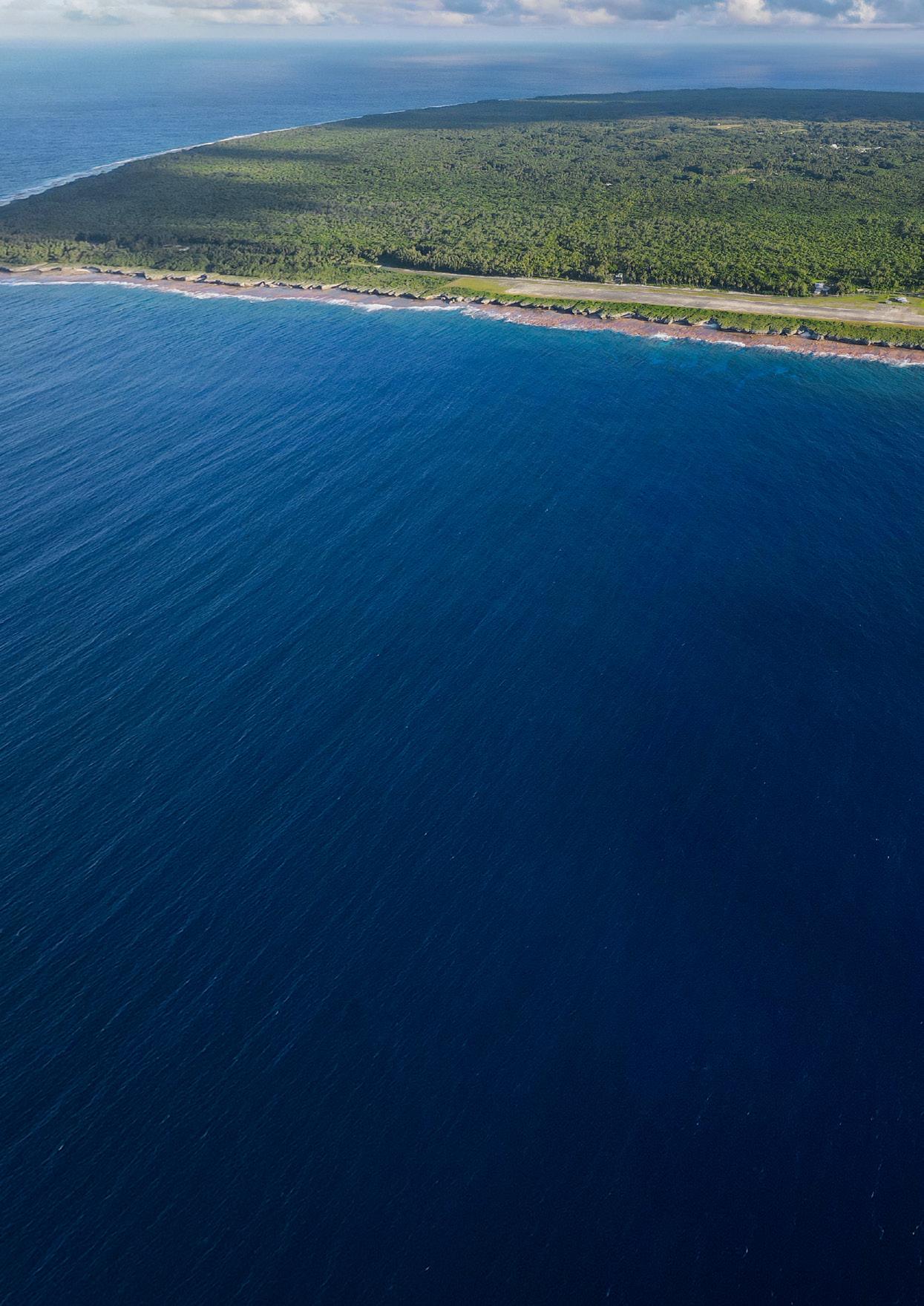
MANA TIAKI…
OUR CULTURE
Our Board, Executive, and Staff all take up the mantle of being guardians of our members funds.
OUR MEMBERS…
As Mana Tiaki we are charged with acting in the long-term best interests of our members, and in many cases this long-term focus will conflict with the immediate needs of our members in their daily lives. The CINSF was established to support security in retirement for our people and so we must hold true to this long-term vision and act accordingly.
GLOBAL BEST PRACTICE…
As Mana Tiaki we look to our peers and set ourselves on a path to not only meet but exceed what our industry considers best practices. We believe that in focusing on capability to implement best practices results in improved outcomes for our members, and therefore supports the Fund’s purpose.
ADDING VALUE…
As Mana Tiaki we seek to demonstrate where we can add value. We believe the Fund has financial and non-financial components where value can be added. We consider that there is an acceptable level of performance and understanding across all areas of the Fund, and therefore we can demonstrate where we have exceeded that and therefore added value.
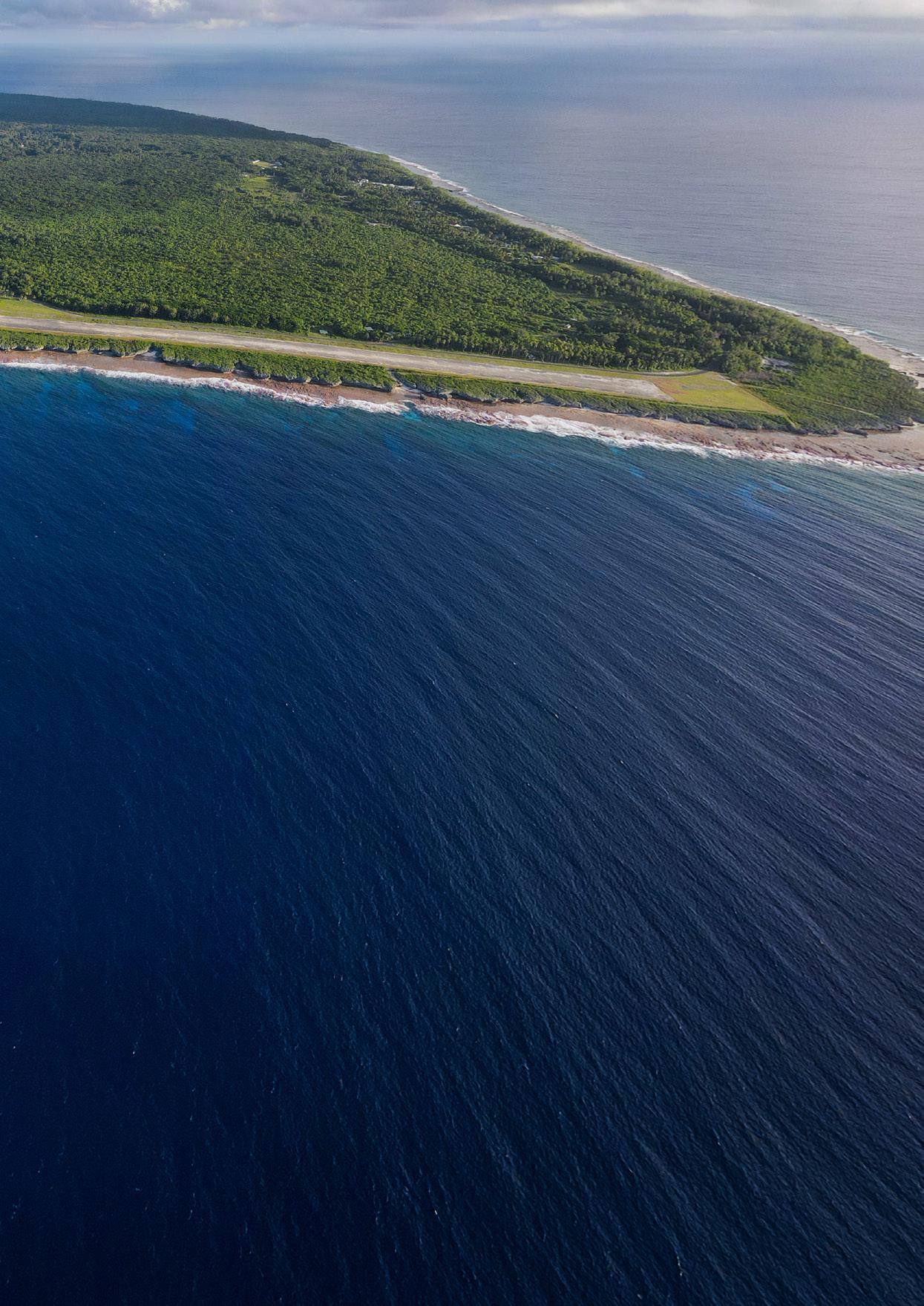
2022 Hi G h L i G h T s
TOTAL INVESTMENTS AT FAIR VALUE $205,765,070

NET INVESTMENT GAIN ($24,301,775)
TOTAL CONTRIBUTIONS $19,539,904
BENEFITS PAID TO MEMBERS $6,296,777
CONSERVATIVE FUND -11.6% BALANCED FUND -11.8% GROWTH FUND -11.9%
TOTAL NUMBER OF MEMBERS 13,574
De C l A r E d Re T u R n S tO Me M b E r S 2 | Cook Islands National Superannuation Fund | ANNUAL REPORT 2022

Ta B l E of Co N t E n T s CEO Letter to Members 4 Trustee Letter 6 Message from Trustee Fund Activity CINSF Fund Performance How the Fund Works Changes to Pension Benefits and Trust Deed Pension Rates Member Benefits 8 Critical Illness Retirement 9 What else can I do? Make a difference with Voluntary Savings 10 Member Statistics 11 Membership Movement Member Age Profile Benefit Payments The Board 12 Board of Directors CINSF Board Meetings Board Remuneration Organisational Chart 13 Risk and Governance 14 Corporate Governance Framework Risk Management Framework Key elements of the CINSF RMF Our Material Risks Investment 17 The investment options Investment Strategy Default Fund Investment Returns Portfolio Summary 20 Asset Classes The Reference Portfolio SuperLife Funds Top 10 Holdings as at 31 December 2022 Vanguard Total World Stock ETF Market Exposure (Blackrock) iShares Core Global Aggregate Bond UCITS ETF 2022- Market Review 26 2023 - Market Outlook 27 Directory 29 ANNUAL REPORT 2022 | Cook Islands National Superannuation Fund | 3
Kia Orana Koutou,
I am sure by the time you read this message you will be well aware of the negative returns the Fund has declared for 2022. While global events impacted the markets and our returns to members, we maintained our long term investment approach and will explain more about this later in the annual report.
As an organization we experienced the flow on effects of the largest outward migration in the Cook Islands since the late 1990’s, with people leaving and competition within the country’s business sector to secure and retain quality people posing challenges to human resourcing, salaries and benefit budgets.
Our response has been to focus on the culture we have been building and valuing our position as Mana Tiaki of our members retirement savings, implementing global best practice objectives, and valuing and rewarding our people in line with our industry peers. This has resulted in our ability to secure and retain a strong and very experienced executive team and implement career development and opportunities for all our staff.
During 2022 we have been focused on improving our cost structures for the long term and supported by research we commenced the implementation of a reference portfolio, a new investment strategy that focuses on achieving market returns at the lowest cost. This also establishes the benchmark for any other investment opportunities, as they will be required to outperform the reference portfolio or provide non correlated returns to the markets. For our members it will provide a transparent measure of any value we add, over the market returns, to the Fund.
Operationally the Fund has maintained an outsourced administration function of the members registry and investment platform since its inception in 2000. With the development and advancements in software features and functionality, combined with the growth of the Fund, we have been able to review this position. Following expressions of interest to provide the CINSF office with the ability to administer the Fund in country, we commenced discussions with three potential providers. This initiative will enable us to administer our members internally, provide local employment, and reduce our overall administration costs. Implementation will occur in 2023.
As the Fund continues to grow and administration functions are migrated back to the Cook Islands office, we are increasing the governance and risk management framework around the Fund. This involves strengthening risk monitoring, management, and reporting to the Board and Trustee, with the inclusion of external reviews of the decisions we make and the performance of the Fund.
As always we remain focused on the objectives of the Fund to support the security of our members in retirement.
I would like to extend my thanks to the CINSF Board and Trustee for their continued support. I would also like to acknowledge our Investment Managers, Administrators, Service Providers, and most importantly the Executive and Staff here in our Cook Islands Office, for all their hard work to support our people. Finally, to our members, I appreciate the trust and support you’ve expressed to our team to continue to manage your retirement savings.
Meitaki Maata e Kia Manuia Damien Beddoes

C e O Le T t E r tO Me M b E r S
4 | Cook Islands National Superannuation Fund | ANNUAL REPORT 2022

ANNUAL REPORT 2021 | Cook Islands National Superannuation Fund | 5
T r U s T e E L e T t E r
Message from Trustee
The Trustee is pleased to present to the Members of the Cook Islands National Superannuation Fund (the “Fund”) the Trustee report for the year ended 31 December 2022. The Annual Report is provided to keep you informed of the Fund’s financial results during the year and your investment in the Fund.
Your individual member statement which lists the value of your benefits as at 31 December 2022 has been uploaded to your online investment account records, available through the member log-in from the CINSF website. Alternatively, a copy is available to you from the CINSF Office.
Fund Activity
During the year under review, combined contributions from members and their employers were $19.5m (2021: $15.0m). Benefit payments were $6.3m (2021: $9.5m). The decrease in benefit payments from 2021 was largely due to a $2.3m reduction in Retirement Benefits paid remembering that in 2021, a number of existing Pensioners opted to withdraw their Pension Account balances, if eligible to do so, following changes made to the Trust Deed that came into force on 1 April 2021. In addition, death benefits paid and related insurance benefits paid decreased from $1.3m in 2021 to $560,650 in 2022.
As a result of volatility on international investment markets, which the Fund is exposed to, the net asset value of the Fund fell by $13.0m to reach $205.8m (2021: $218.8m). Also, 1,111 new members joined the Fund, bringing the total membership to 13,574 as at 31 December 2022. Pensioners rose from 254 at the end of 2021 to 280 as at the end of 2022.
The Balanced Fund is now the default Fund where, from 1 January 2022, new Members joining the Fund are allocated if they do not provide an investment selection.
CINSF Fund Performance
The table below sets out the interest rates to be allocated to Member Accounts for the year ended 31 December 2022.
The Investment Fund returns are a combination of the change in market value of the Funds plus any distributions that are reinvested back into the Funds.
As noted in the 2020 and 2021 Annual Reports, the Fund has not been immune to the impact of the COVID-19 pandemic and other outside factors impacting the Fund’s investments. Geo-political events and inflationary pressures negatively impacted Fund returns during the 2022 year. On the advice of the Fund’s actuary, the Trustee and the Board have opted to utilize part of the Reserve Account balance to partially offset the investment losses. The balance of the General Reserve Account is $1,026,593 (2021: $2,113,597).
As part of the ongoing and long-term nature of the Fund, the Trustee in consultation with the Board continues to undertake investment reviews in consultation with the investment managers, investment staff at the CINSF Office and with independent investment consultants. During the year ended 31 December 2022, the Fund’s investments were changed from Russell Investment Fund products to SuperLife products managed by Smartshares. For more details on this change, please refer to the Investment section of this report.
It is pleasing to note that, to date, the investment funds have achieved positive returns during the first 5 months of 2023.
CINSF Investment Fund Interest Rate Year ended 31 December 2022 (%) CINSF Conservative Fund -11.6% CINSF Balanced Fund -11.8% CINSF Growth Fund -11.9%
6 | Cook Islands National Superannuation Fund | ANNUAL REPORT 2022
How the Fund Works
The Fund is designed to provide Members with a means to save for their retirement. The Fund is intended to help give Members financial security in their retirement or, in the event of their death before retirement, security for their dependents.
Membership of the Fund is compulsory for all people working in the Cook Islands or employed outside the Cook Islands by an employer resident in the Cook Islands unless the employer qualifies for a specific exemption. As a member you contribute 5% of your salary to the Fund and your Employer also contributes 5%. All contributions are allocated to your Member and Employer Account (collectively known as your Compulsory Account) held in your name. Each year Compulsory Accounts are credited with interest reflecting the rate earned by the Fund during the year. In financial years where there are investment losses, Compulsory Accounts could show negative returns by the allocation of any investment losses. The main purpose of the Fund is to provide for retirement through long term savings. To encourage savings, you are not able to withdraw monies from the Fund, except in certain circumstances, while remaining a contributing member. The Fund also provides you with Life Insurance cover provided you meet certain criteria.
Changes to Pension Benefits and Trust Deed
Effective from 27 October 2022, a Critical Illness Benefit was introduced to “assist” Members who are suffering from a Critical Illness to obtain specialist treatment that is not available in the Cook Islands. The amount of the benefit is limited to a total benefit payment of $5,000.00. For more information see the Member Benefits section of this report.
Pension Rates
An Actuarial review of the Fund was conducted for the year ended 31 December 2019. The report was finalised in August 2020 and an implementation date of 28 February 2021 for the new pension rates was determined. Under legislation, an actuarial review is required at a minimum 3-year period since the previous review. The next Actuarial review will be for the period ended 31 December 2022.
The full list of current pension rates is available from the CINSF Office or the Fund’s website.

ANNUAL REPORT 2022 | Cook Islands National Superannuation Fund | 7
Me M b E r Be N efi T s
Following extensive consultations with our members and the Cook Islands Ministry of Health, we have launched a new benefit to support our members at one of the most vulnerable times in their lives.
Critical Illness
This new benefit is designed to provide financial assistance to members who are required to obtain treatment for a critical illness that is not provided in the Cook Islands.

The benefit provides for a maximum amount of up to $5,000.00 to be withdrawn from a member’s compulsory account.
In consideration of the maximum withdrawal, members have a choice on how much they would like to draw down. A member may consider they will need further referrals overseas for treatment and therefore may elect to withdraw a partial amount and keep the remaining balance to claim again in the future.
BENEFIT: CRITICAL ILLNESS
Applies to: Contributing Members
Exclusions: Pension Members
Amount: up to a maximum of $5,000 (can have more than one claim but total must not exceed $5,000. Eg. member claims $2,000 in 2023, member can claim up to $3,000 if medically referred again in the future).
Eligibility: The contributing member must qualify for medical referral for a critical illness or accident that requires treatment not available in the Cook Islands. Supporting documentation is required from the Cook Islands Ministry of Health.
All claims are subject to review and approval at the sole discretion of the Trustee.
Term: Claims must be lodged within 3 months of the treatment period. Claims lodged after this period will not be eligible for the benefit.
Definitions: Contributing Member – is a member of the CINSF that has not claimed a pension benefit.
Critical Illness – is an illness or accident that requires specialist treatment not available in the Cook Islands.
Medical Referral – is determined by the Cook Islands Ministry of Health as an illness or accident that requires specialist treatment not available in the Cook Islands.
Pension Member – is a member that has claimed the CINSF pension benefit and is no longer contributing to the CINSF.
Treatment Period – is the period related to the operation or treatment of the illness or accident that requires the member to be overseas.
Trustee – Public Trust, New Zealand
8 | Cook Islands National Superannuation Fund | ANNUAL REPORT 2022
If you were to stop working right now and retire what would that look like? How would you pay your expenses? How would you live?
If that sounds financially scary, let’s look at a breakdown of what is available to support you today.
Government Pension: The one income that we can receive at retirement, subject to qualifications, is a government pension payment. In the case of the Cook Islands Government Pension that is $250 paid on the 1st and again on the 15th of every month.

CINSF Pension: If you have saved $60,000 with CINSF, you will receive approximately $250 per month as a pension payment. The amount you receive increases the more you have saved.
Based on the above Pensions, during a month, you will receive 3 payments of approximately $250, to support you.
Your Personal Savings: Any short fall between the income in retirement that you will receive from the Government Pension and the CINSF Pension, and the expenses you will have in retirement, is what you will need to provide for.
This may come from additional savings, other investments, rental property, a small business, or from wages if you continue to work through your retirement.
What else can I do?
Choosing the right investment option that aligns with your age and financial status can significantly impact your retirement savings. The CINSF offers different investment options tailored to meet your needs.
For younger members with a longer investment timeframe, the Growth Fund option provides a higher risk with the potential for higher returns over the long term. Conversely, older members may consider the Conservative Fund option with a lower risk but also lower returns. By carefully considering your investment choice, you can maximise your retirement savings and increase the likelihood of achieving your financial goals.
We do recommend consulting with financial advisors or utilising the tools and resources provided by CINSF, such as the Voluntary Fund, and investment questionnaires to ensure you select the most suitable investment option for your circumstances.
Re T i R e M e N t ANNUAL REPORT 2022 | Cook Islands National Superannuation Fund | 9
A voluntary savings account with CINSF is one of the fastest and easiest ways to help you save for your retirement.
It’s as easy as letting your employer know you’d like to put a little bit more from your wages into your voluntary savings account each pay day.
Voluntary Contributions:

• a set amount from each pay eg. $20. or
• a percentage from each pay eg. 3% of your pay. or
• a lump sum payment minimum $1,000. No maximum.
There is no limit on how much you would like to pay into your voluntary account from either your wages or as a lump sum.
Your savings will be invested in your name in a voluntary savings account and will be invested using your existing investment choice.
Your voluntary savings account is also a tax-free investment to encourage you to save and grow your investment faster. Once your money is credited to your voluntary savings account it is not subject to tax, and nor is it taxed on withdrawal.
We understand that life challenges can arise from time to time, so we have made it possible to change or suspend your voluntary contributions from your wages, and to make a withdrawal from your voluntary savings account once per calendar year. Withdrawals are not a fast process and are generally credited to your own person bank account within 10 working days.
Ma K e
ffe R e N c E
I t H Vo L u N tA
i
a d I
w
r Y SaV
N g S
10 | Cook Islands National Superannuation Fund | ANNUAL REPORT 2022
Me M b E r StA t I s T i C s
Throughout the year the CINSF monitors the changes in membership, manages the member claims, and attends to the wide range of enquiries from both members and employers. To follow are the main demographics of the CINSF membership:
MEMBERSHIP MOVEMENT
BENEFIT PAYMENTS

PROCEEDS PAID $176,115
MEMBER AGE PROFILE
PAID $888,289
$1,531,799 TOTAL $6,296,627
2022 Opening Membership 12,761 New Members 1,111 New Pensioners 26 Subtotal 13,898 Expatriate Withdrawal 162 Early Retirement 4 Retirement 120 - Total & Permanent Disablement 8 - Death Claim 17 Withdrawn Membership 13 Total Exits 324 Membership Total as at 31 December 2022 13,574
Demographic Members Members 20 years & under 537 Members 21 - 30 years 3,247 Members 31 - 40 years 3,727 Members 41 - 50 years 2,958 Members 51 - 60 years 2,306 Members 61 - 64 years 420 Members 65 + years 384 Total 13,574 RETIREMENT
INSURANCE
PENSIONS
SERIOUS ILLNESS
TEMP. & PERM. DISABLEMENT
EXPATRIATE W.DRAWAL BENEFIT
$3,110,354 DEATH $384,535
$0
$205,535
ANNUAL REPORT 2022 | Cook Islands National Superannuation Fund | 11
Th E Bo A r D
The CINSF Board is currently made up of six Board Members, a member elected representative, a Cook Islands Workers Association representative, a Chamber of Commerce representative, a Non-Chamber Employer elected representative, the Financial Secretary, and an additional Board Member. The Board members are appointed for a term of 3 years and can be re-elected for further terms.
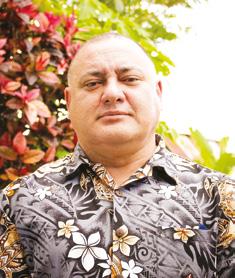



BOARD OF DIRECTORS
CINSF Board Meetings
The CINSF Board convened 12 formal and 2 special Board workshops in the 2022 year, with 2 Board members completing their New Zealand Institute of Directors Certification Course.

Board Remuneration
Ordinary Board Member: $10,000 per year

Board Chairperson: $15,000 per year
 Mrs Anna Koteka Members Representative
Mrs Tatiana Burn Cook Islands Chamber of Commerce
Mr John Tini Cook Islands Workers Association Representative
Mr Heinz Matysik Non Chamber of Commerce Employer Representative
Mr Alan Taylor Board Member
Mr Garth Henderson Cook Islands Financial Secretary
Mrs Anna Koteka Members Representative
Mrs Tatiana Burn Cook Islands Chamber of Commerce
Mr John Tini Cook Islands Workers Association Representative
Mr Heinz Matysik Non Chamber of Commerce Employer Representative
Mr Alan Taylor Board Member
Mr Garth Henderson Cook Islands Financial Secretary
12 | Cook Islands National Superannuation Fund | ANNUAL REPORT 2021



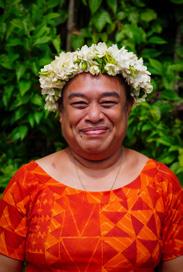


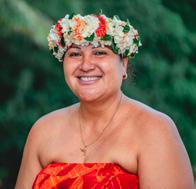




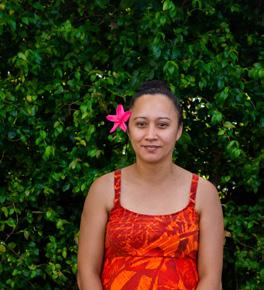

Or G a N i S aT i O n A l Ch A r T
Client
Leviticus
Client
Client Services
- Pa Enua
Client
Damien Beddoes Chief Executive Officer Terai Nga Senior
Services Officer Samantha Ivaiti Chief Risk Officer
Atirai
Services Officer Taraatua Tschan Senior
Officer
Twinn Joseph Chief
Services Officer Rangi Ivaiti Chief Financial Officer David Brown Chief Investment Officer
Michelle Elia-Siloata Investment Analyst
Leah Tumutoa Finance Officer
ANNUAL REPORT 2021 | Cook Islands National Superannuation Fund | 13
Shona Brider Client Services Officer CINSF BOARD
Effective and efficient risk management and governance is essential to delivering on our strategic initiatives and making well informed business choices that always prioritise the ‘best interests’ of our members and their security in retirement.
While the macroeconomic and local economic environments have shifted consistently over the past two-three years creating operational challenges to achieving these priorities, the CINSF Board and Executive have remained focused on progress towards stronger and simpler risk management and governance frameworks. These frameworks enhance CINSF’s ability to proactively look for and manage risks that could impact strategic imperatives, organisational priorities and to deal with governance and risk issues as they arise.
Corporate Governance Framework
•
• Investment workshops
•
•
The statutory and fiduciary governance arrangements for CINSF (illustrated above) are set out in the CINSF Act (2000) and Trust Deed respectively. The CINSF Act and Trust Deed establish the functions, powers and duties of the Trustee and the CINSF Board members along with reporting and accountability requirements.
CINSF’s Trustee is the NZ Public Trust, a New Zealand Crown Entity. They work with the CINSF Board to provide oversight of effective management and administration the Fund on behalf of members and beneficiaries and investing the Fund’s assets.
This year, the CINSF Board undertook a focused Strategy and Risk Management workshop to reset the direction for strategic and business priorities for the CINSF Organisation over the next three to five years and to define the Board’s formal appetite for risk. Key governance themes from
the workshop included a continued focus on the embedding of industry leading corporate governance processes and consistent delivery of quality information to inform and support Executive and Board level decision making. This specific focus on governance has already produced improvements in internal governance, risk and compliance policy implementation and awareness, formally documented governance processes and the scope and quality of Board reporting.
Ri S k a N d Go V e R n A n C e
BOARD RESERVES POWERS AND DELEGATION OF AUTHORITY
CINSF ACT CINSF BOARD
Strategy & Risk workshop
Chief Executive Office
Executive Team
Staff
TRUST DEED TRUSTEE
INVESTMENT MANAGER
ADMINISTRATION MANAGER
14 | Cook Islands National Superannuation Fund | ANNUAL REPORT 2022
AUDITOR INSURER ACTUARY
Risk Management Framework
As Mana Tiaki of our Member’s superannuation savings, risk management (which includes the management of CINSF’s compliance obligations) sits at the heart of our purpose, vision, and culture.
By holding ourselves accountable for the adoption of proactive and formal identification and management of events that could impact the achievement of strategic and business objectives, we demonstrate our commitment to guard and grow CINSF which fundamentally exists to provide long-term security to our members throughout their retirement.
A key risk management theme identified through the Board’s Strategy and Risk workshop was the need to mature and enable CINSF’s Risk Management Framework (RMF). This framework provides a mechanism for the Executive Team and the CINSF Board to consider, analyse, prioritise, exploit, or control and monitor interrelated and sometimes complex risks. Use of the RMF allows the CINSF Board to understand and measure its risk profile and balance risk and reward within its formal risk appetite.
Following the Board’s Strategy and Risk Management workshop, the CINSF Risk Management Policy, which sets out the mandatory requirements for risk management and describes elements of the RMF, has been drafted and approved. The CINSF Board’s formal Risk Appetite Statement and Corporate Risk Profile are currently under development and research and selection of a ‘fit for purpose’ risk information system that will operationalise the RMF and further uplift risk and compliance management capability is currently underway.
Key elements of the CINSF RMF and its foundation of ‘culture and capability’ are illustrated below.
KeyRisk Metrics
STRATEGY AND DIRECTION Culture and Capability Boundaries, approach & expectations Control Testing Management Investigation & Analysis Risk Management Performance Measurement Policy and Framework Reviews Audit Board Assess Communication & Consultation RISK INFORMATION & SYSTEM Monitoring Review Reporting Risk and Control Assesment*
Issues Management Obligations Management Incident Management UNDERSTAND AND CONTROL Tools and processes ANALYSIS, REVIEW AND IMPROVEMENT Reviewing, reporting & improving Establishing the context Risk Treatment Analysis & Evaluation Risk Identification Risk Appetite Risk Policy Risk Accountabilities Risk Forums and Teams Awareness and Training ANNUAL REPORT 2022 | Cook Islands National Superannuation Fund | 15
Our Material Risks
CINSF distinguishes different types of material risks and adopts the RMF to ensure it takes an integrated approach to the management of these risks and the implementation of specific and related risk and control policies. Material risk types workshopped and agreed by the CINSF Board include:
• LIQUIDITY RISK - the risk of an inability to meet cash obligations as and when they fall due without incurring unacceptable losses. For CINSF, liquidity risk is considered at both a portfolio and corporate level perspective.
• INVESTMENT (GOVERNANCE) RISK - relates to internal management and oversight of the portfolio and is the risk that threatens the ability of an entity to manage issues under the fund’s control to adequately protect the interests, and meet the reasonable expectations, of beneficiaries.
• INVESTMENT (MARKET) RISK - the risk of losses on financial investments caused by adverse market movements which are external to the control of the fund. E.g. changes in equity prices or commodity prices, interest rate movements and/or foreign exchange fluctuations.
• COUNTERPARTY RISK - the risk of a contractually obligated counterparty (e.g. Insurer) failing to settle a debt, repay or meet contractual obligations.
• STRATEGIC RISK - are those that arise from identifying and pursuing a strategy, which is poorly defined, is based on flawed or inaccurate data or fails to support the delivery of commitments, plans or objectives due to a changing macro-environment (e.g. political, economic, social, technological, environment and legislative change).
• OPERATIONAL RISK - the risk of loss resulting from inadequate or failed internal processes, people and systems or from external events. Includes Compliance risk
Risk matters are reported to the CINSF Board on a monthly basis as part of regular Board reporting and escalated in instances when events or incidents are identified as being beyond the formal risk appetite of the Board.

16 | Cook Islands National Superannuation Fund | ANNUAL REPORT 2022
In V e S t M e N t
Member Investment Options
The Fund provides 3 investment options for members to choose from. Members can choose to place all their investment into one option or split into more than one option.
All three options are professionally managed, robust portfolios, diversified and thoughtfully constructed to be suitable for superannuation scheme members. Members can be confident of long-term positive outcomes from each option.
Each option has a different risk and return profile, with the Growth Fund designed for a higher short-term risk but potential for higher long-term returns, down to the Conservative Fund designed for a more stable shortterm, but lower long-term return profile. The choice is yours, but remember that long-term, “Growth” exposure will tend to produce better returns, and better returns will produce a higher income in retirement through the CINSF pension.
The Default option for those not wanting to make a fund investment choice is the Balanced Fund. It is also notable, that after retirement, the member’s pension assets are automatically invested in the Balanced strategy. The fund Actuary recommended this as the best way to manage the pension obligations long-term.
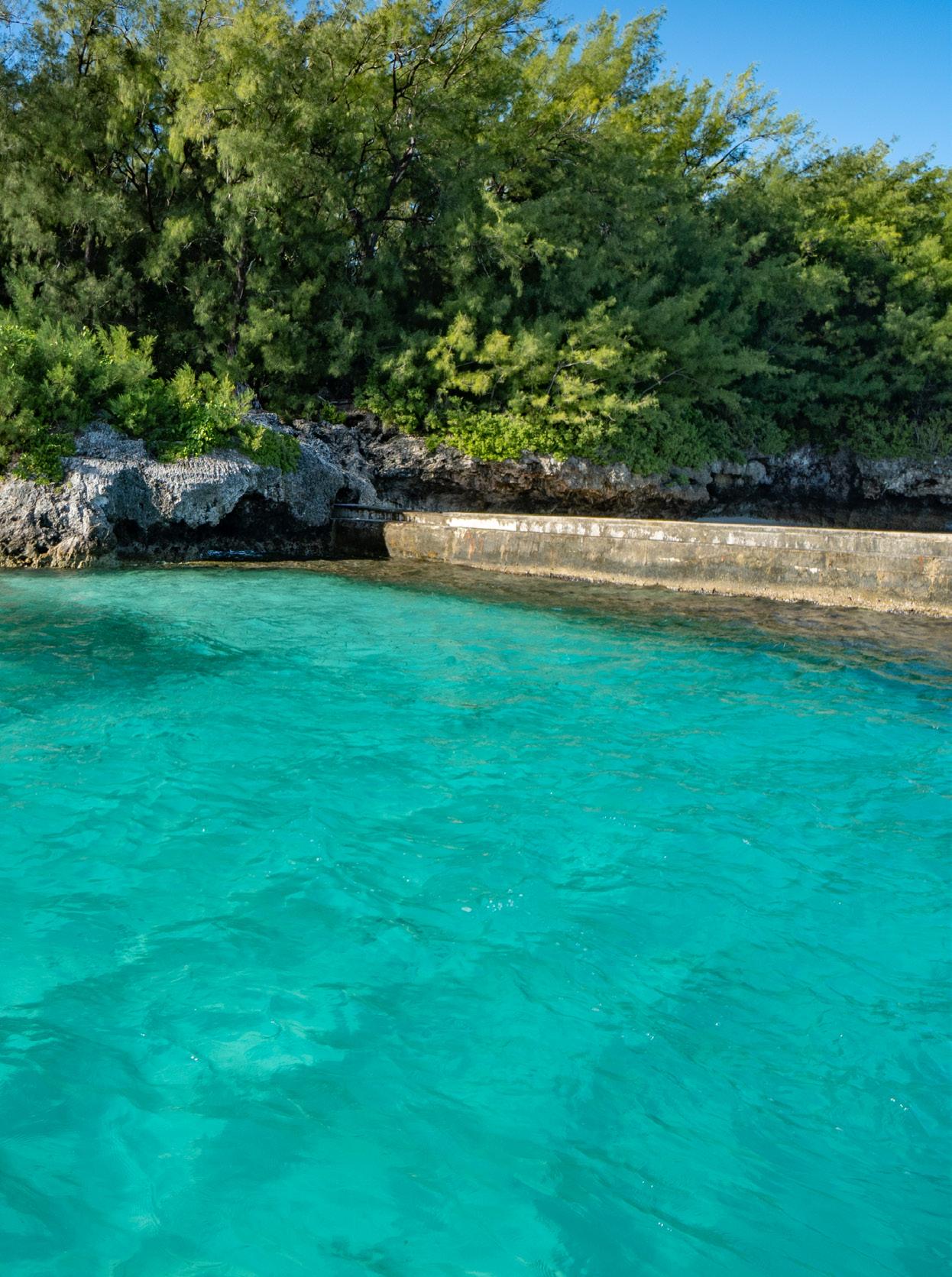
The three options are different set mixes of “Defensive” or assets that produce most of their return from income, and are therefore more stable, and “Growth” assets which produce most of their growth from long-term price appreciation.
The Defensive and Growth exposure is achieved by purchasing passive ETFs (Exchange Traded Funds), which are bought and sold on global stock markets.
ANNUAL REPORT 2022 | Cook Islands National Superannuation Fund | 17
The investment options are:
The Growth Option has the highest exposure to “Growth” assets and is designed for long-term investors with more than 10 years until retirement. Because the design is oriented towards 80% exposure to stock-market investments, this option can show short-term volatility (or negative and positive returns in quick succession). However, history suggests that this option will ultimately deliver the highest returns long-term (+ 5 years).
This option has a mid-range exposure to both the global stock market (60% Growth assets), and global fixed income (40% Defensive assets). As such, this moderate fund has been selected for the Default where a member does not elect a specific investment choice. It is also the strategy used for investing the Pension assets for those members already in retirement. This options should produce attractive longterm returns, however, there is a moderate chance of a short-term negative return in some years
This option has the lowest exposure to Growth assets with only 30%. While the 70% Defensive exposure should indicate a more stable return over short periods, the result is likely to be a lower return over the long-term. This option may be considered for people approaching retirement and seeking to preserve their accumulated capital ahead of moving into he pension phase, or for people with a strong aversion to stock market price fluctuation.
INVESTMENTS OPTIONS
GROWTH FUND $16,047,705
BALANCED FUND $20,420,627
CONSERVATIVE FUND $164,476,544
2017 2016 2015 0% 10% 20% 30% 40% 50% 60% 70% 2018 2019 2020 2021 2022
ACCUMULATED DECLARED INTEREST RATE SINCE 2015
GROWTH BALANCED CONSERVATIVE
THE BALANCED FUND (ASSET ALLOCATION)
THE GROWTH FUND (ASSET ALLOCATION)
THE CONSERVATIVE FUND (ASSET ALLOCATION)
20% 80% INCOME ASSETS GROWTH ASSETS INCOME ASSETS GROWTH ASSETS 40% 60% INCOME ASSETS GROWTH ASSETS 30% 70%
18 | Cook Islands National Superannuation Fund | ANNUAL REPORT 2021
Investment Strategy
The CINSF Investment Strategy is continually reviewed, including annual workshops conducted with the CINSF Board to review the investment performance against the strategies designed to meet the Fund objectives.
Structurally the Fund provides for 2 main components:
1 Accumulation – the period where a member contributes from their earnings, their employer contributes the same, and a member can choose to make additional voluntary savings.
During the accumulation period the member carries the risk of saving enough money during their working life to provide as large a balance as possible for retirement. The Fund provides investment options to support different levels of risk to achieve potentially higher returns.
2 Decumulation – The period where a member elects to take a lump sum percentage and/ or claim their pension for life benefit, and the Fund manages the pension payments to the member.
During the decumulation period the member receives a pension for life, so the Fund carries the risk to invest the members money and manage pension reserves to provide for the member and potentially the spousal pension if the member is married.
Understanding the components that make up the Fund helps us to determine the investment strategy to meet the objectives in the accumulation and decumulation phases.
In 2022 the Fund implemented a Reference Portfolio as its new strategy. This approach involves the selection of passively managed investments, at a low cost, to achieve the average market return. Further in this section is a full explanation of the Reference Portfolio.
Default Fund
The Board, upon advice from the Actuary, implemented a switch to the Balanced strategy for both the assets backing the Pensions and as a default for new members commencing after 1st January 2022.
The CINSF Investment Division continually researches all investment categories to achieve the optimal investment outcomes for members. It is planned to transition legacy default balances from the Conservative to the Balanced strategy though 2023 and 2024.
In these ways, the team is putting in place the conditions for members to not only achieve larger balances at retirement, but maintain attractive pension payments throughout retirement and for the life of members’ surviving spouses.
Investment Returns
Following strong government stimulus during the Covid years, most markets around the world delivered attractive returns. This unwound dramatically during 2022, not helped by the Russian invasion of the Ukraine. As both Russia and the Ukraine are major exporters of foodstuffs, energy and minerals, the supply disruption saw markets tumble, not the least of which was the expensive looking fixed interest market.
This usually defensive fixed interest market was punished as much as equities in the face of anticipated post-covid inflationary shocks. Cost of living increases and higher interest rates caused a market rout not seen for more than 30 years.
However, even in the midst of crisis, equity markets interpreted inflation as a sign that the global economy was strong enough for companies to increase prices. Equities recovered from their lows in the last quarter of 2022, while Fixed Interest languished.
This explains why the fixed interest heavy Conservative option laboured under these circumstances.
The 2022 declared returns to members are as follows:
CINSF Investment Fund Interest Rate Year ended 31 December 2022(%) CINSF Conservative Fund -11.6% CINSF Balanced Fund -11.8% CINSF Growth Fund -11.9%
ANNUAL REPORT 2021 | Cook Islands National Superannuation Fund | 19
Po R tfo L i O Su M m A r Y
Details of the three CINSF Investment Funds available to Members are set out below.
To produce rates of return over time that are more stable than the Balanced and Growth Options and are in excess of inflation by a modest amount. This is done by investing a small percentage (30%) of the fund in growth assets (world stock markets) while keeping the probability of a negative return at low levels
31 Dec 2022: $164,476,544
31 Dec 2021: $185,610,159
ALLOCATION AS AT 31 DEC 2022
CINSF BALANCED FUND VALUE OF FUNDS
31 Dec 2022: $20,420,627
31 Dec 2021: $17,366,123
To produce rates of return over time that are sustainably higher than those of the Conservative option, but less volatile than the Growth Option, returns which exceed inflation by a realistic amount. This is done by investing a significant percentage (60%) of the fund in growth assets (world stock markets) while keeping the probability of a negative return at moderate levels.To produce rates of return over time that are sustainably higher than those of the Conservative option, but less volatile than the Growth Option, returns which exceed inflation by a realistic amount. This is done by investing a significant percentage (60%) of the fund in growth assets (world stock markets) while keeping the probability of a negative return at moderate levels.
ALLOCATION AS AT 31 DEC 2022
31 Dec 2022: $16,047,705 31 Dec 2021: $12,416,054
To produce rates of return over longer time periods that are sustainably higher than those of the Conservative and Balanced options, which exceed inflation by a significant amount. This is done by investing a major portion (80%) of the fund in growth assets (world stock markets) while remembering the probability of a negative return is possible over short periods.
ASSET CLASS RANGE ALLOCATION AS AT 31 DEC 2022
OF
CINSF CONSERVATIVE FUND VALUE
FUNDS
CLASS RANGE
ASSET
Hedged (to NZD) Global Equities 10% – 20 15% Unhedged Global Equities 10% - 20% 15% Growth Assets 25% - 35% 30% Hedged (to NZD) Global Bonds 65% – 75 70% Income Assets 65% - 75% 70%
ASSET CLASS RANGE
Hedged (to NZD) Global Equities 25% – 35% 30% Unhedged Global Equities 25% - 35% 30% Growth Assets 55% - 65% 60% Hedged (to NZD) Global Bonds 35% – 45% 40% Income Assets 35% - 45% 40%
GROWTH FUND VALUE OF FUNDS
CINSF
Hedged (to NZD) Global Equities 35% – 45% 40% Unhedged Global Equities 35% - 45% 40% Growth Assets 75% - 85% 80% Hedged (to NZD) Global Bonds 15% – 25% 20% Income Assets 15% - 25% 20%
20 | Cook Islands National Superannuation Fund | ANNUAL REPORT 2022
Asset Classes
Each investment option is designed to offer members a choice between different risk objectives. We do this by varying degrees of exposure to “Growth” and “Defensive” asset classes.
Growth Assets are those that gain the most long-term return through the appreciation of their value and are best represented by shares traded on stock markets around the world. These shares capture the growth in global economies but are also subject to the ups and downs of the share market. Over the medium-to long terms these sorts of investments have provided the best return.
Defensive Assets are more stable in their price but are not without their own (typically lesser) price movements up and down. Defensive assets tend to gain most of their return from income. A good example of this type of investment is what we call Fixed Interest, eg. government and corporate bonds that pay a fixed return.
It is important to remember that the price of these Defensive Assets can also go down, but they typically move in a different pattern from the share market (Growth Assets). As such, combining Growth and Defensive Assets can produce a robust, diverse portfolio that, improves the risk and return characteristics of the two parts which means over all sorts of conditions, such a combined portfolio can still produce good long-term returns to members.
The Reference Portfolio
The three CINSF Member options are therefore different mixes of the two asset classes. This produces a set of three moderate risk options. The lowest (but to be clear not without) risk option is mostly invested in Defensive Assets and is called the Conservative Fund. A mid risk option called the Balanced Fund, and higher risk option with a predominately growth asset class exposure called the Growth Fund.
Each is composed of different mixes of the same three SuperLife products. SuperLife, a subsidiary of NZX Ltd, specialses in providing New Zealand collective investment vehicles to be sold to retail and wholesale investors. Essentially the three products the Cook Islands Superannuation Fund chooses are a New Zealand re-packaging of three broad-market, highly diverse, index-tracing passive ETFs (Exchange traded Funds).
ETFs are a cheap and effective way to access a full market by buying one single security on the New York Stock Exchange or some other highly liquid marketplace.
These three basic mixes of ETFs are what we call the Reference Portfolio.
ASSEST CLASS SUPERLIFE MANAGED FUND BENCHMARK
Global Equities unhedged
SuperLife Total World Fund (Unhedged)
– NZ PIE Fund1; its in the Vanguard Total World Stock ETF (Ticker VT)
Global equities Hedged into NZD
SuperLife Total World Fund (NZD Hedged)
– NZ PIE Fund1; invests in the Vanguard Total World Stock ETF (Ticker VT)
Global Fixed Interest
Hedged into NZD
SuperLife Global Aggregate Bond Fund (Hedged) – NZ PIE Fund1; invests fully in the (Blackrock) iShares Core Global Aggregate Bond UCITS ETF
FTSE Global All Cap Index (converted to the New Zealand dollar)
FTSE Global All Cap Index (Hedged to the New Zealand dollar)
Bloomberg Global Aggregate Index 100% hedged to the NZD
1 PIE = Portfolio Investment Entity, a New Zealand collective investment structure that enables investors to be taxed at their marginal rate, in the case of CINSF, that tax rate is set to 0% as a foreign, exempt investor.
ANNUAL REPORT 2022 | Cook Islands National Superannuation Fund | 21
Further information on the SuperLife funds is set out on the following page.
SuperLife Funds
SuperLife provides KiwiSaver, investment, superannuation and insurance solutions to over 50,000 members and is managed by Smartshares Limited, which is a wholly owned subsidiary of NZX Limited.
Features of the SuperLife approach:
A passive investment philosophy
• SuperLife specialises in a passive approach to investing in the belief that this will deliver better long-term results. Constantly changing investments (that is, trading regularly and seeking short-term gains) doesn’t always consistently add value to investors.
• SuperLife also employs stable strategies believing that no one knows what will happen in the economy and investment markets over a particular future period. While history may give us some insights, history also tells us that each period can be different.
Low fees
• SuperLife fees are among the lowest in the market with no performancebased fees or commissions.
• Fees matter. The impact of even small fee differences each year can be significant over time.
• Their our view that investment management is an exception to the rule “you get what you pay for” - and do not believe high-fee fund managers will deliver superior performance over time.
Flexibility
• Superlife offers clients access to the same broad range of investment options.
• Clients can set and change their investment strategies at any time, free of charge.
Transparency
• SuperLife are straightforward about what they can and can’t do for clients.
• They always quote investment returns after (net of) total fund charges and taxes. They believe this information is more useful.
• Because SuperLife package up offshore ETFs for us to fit the CINSF tax situation, we show below some information about these underlying ETFs contained within the SuperLife Funds.
Top 10 Holdings as at 31 December 2022
Vanguard Total World Stock ETF
Vanguard is one of the world’s most respected investment management companies, offering a broad selection of investments, advice, retirement services, and insights to individual investors, institutions, and financial professionals. They operate under a unique, investorowned structureand adhere to a simple purpose: To take a stand for all investors, to treat them fairly, and to give them the best chance for investment success.Shareholders in Vanguard funds benefit from their client focus, experience, stability, and long-term, disciplined investment approach.
inc. (AAPL) 12.6% Microsoft Corp. (MSFT) 7.3% Amazon.com Inc. (AMZN) 6.9% NVIDIA Corp, (NVDA) 6.5% Alphabet Inc. . Class A (GOOGL) 5.4% Alphabet Inc. Class C (GOOG) 5.1% Facebook Inc. Class A (META) 5.1% Tesla Inc (TSLA) 3.9% Berkshire Hathaway Inc Class B (BRK.B) 3.9% United Health Group Inc. (UNH) 3.2%
Apple
22 | Cook Islands National Superannuation Fund | ANNUAL REPORT 2022
Market Exposure
(Blackrock) iShares Core Global Aggregate Bond UCITS ETF
With US$2.5 trillion assets under management iShares has been a leader in the ETF marketplace for more than two decades, and as a part of BlackRock, their products are engineered by investment professionals with discipline and deep risk management expertise. iShares has a global lineup of 1,250+ Exchange Traded Funds (ETFs).
as at 31 December 2022 United States 60.00% Japan 6.30% United Kingdom 4.00% China 3.10% Canada 2.80% France 2.70% Switzerland 2.40% Australia 2.00% Germany 2.00% Taiwan 1.90% India 1.80% Korea 1.40% Netherlands 1.10% Sweden 0.90% Denmark 0.70% HongKong 0.70% Italy 0.70% Brazil 0.60% Spain 0.60% Saudi Arabia 0.40% Belgium 0.30% Finland 0.30% Mexico 0.30% Singapore 0.30% South Africa 0.30% Thailand 0.30% Indonesia 0.20% Israel 0.20% Malaysia 0.20% Norway 0.20% United Arab Emirates 0.20% Austria 0.10% Chile 0.10% Greece 0.10% Ireland 0.10% Kuwait 0.10% New Zealand 0.10% Philippines 0.10% Poland 0.10% Portugal 0.10% Qatar 0.10% Turkey 0.10%
ANNUAL REPORT 2022 | Cook Islands National Superannuation Fund | 23

24 | Cook Islands National Superannuation Fund | ANNUAL REPORT 2021

ANNUAL REPORT 2021 | Cook Islands National Superannuation Fund | 25
One of the reasons super funds like ourselves choose a mix between shares and bonds, is that most of the time they behave in different ways. This “low correlation” as the industry calls it is usually a good way to diversify a portfolio. This means that while one goes up, the other (hopefully) goes down and the investor is left with not all the eggs in one basket.
That’s the theory. 2022 proved to be one of the odd years when that theory did not work. For the first time in fifty years (1969 to be precise2), both equities and bonds suffered in broadly equal terms rendering most diversification plans fruitless.
It may seem easy to blame everything on Covid, but the fact that governments around the world threw so much money at the problem, we all anticipated a overhang after the party. With so much money in the system (propping up pandemic economies), the market soon switched its fears to the potential for inflation.
So, in a year when the markets were already becoming increasingly wary of any hint that inflation was returning, interest rates were increased and wage inflation loomed in the wake of staff shortages. 2022 entered in with a looming sense of forboding. And that’s when Russia invaded the Ukraine. Both combatants are very large exporters of grain and gas and minerals, all vital to the ordinary operation of industry around the world. For example, around 60% of Germany’s gas came from Russia.
The ensuing fear on global markets caused inflation in most corners of the globe, including here in the Cook Islands. Cost of living crises was front page news in almost every country.
This double-edged crisis led to a year in which both Growth and Defensive markets reacted in a rare synchronised dive, too quick for any reaction by many investors.
Both the new passive investment approach we used to reduce fees in the last year and more active approaches suffered major falls in value during the year.
Broadly, benchmark Global Equities in hedged NZD terms were down -16.7% (unhedged -11.35%) while benchmark global fixed interest (Bonds) were down -11.49%.
The markets representing a large portion of the Cook Islands National Superannuation Fund’s (CINSF) portfolios contributed to negative member returns.
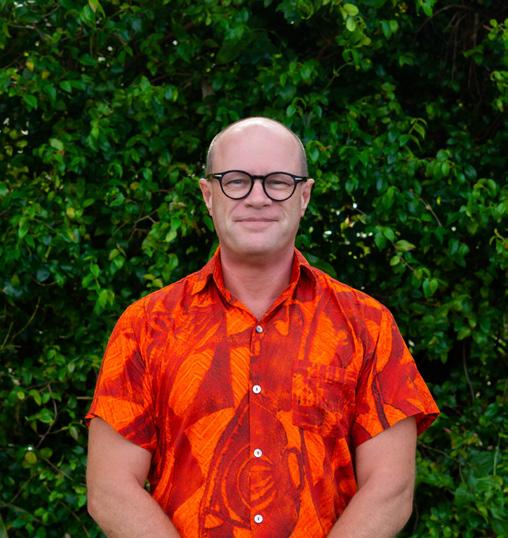
After a year of so much uncertainty for many, members should feel reasonably pleased that the last quarter of the year and indeed 2023 has seen significant recoveries in value for their balances. This shift in volatility should be expected fom time to time and we stress the robust, diversified nature of the Fund design. Recovery in values for the first months of 2023 just proves this point.

W 2 Stocks and bonds both down, what to do with your money (cnbc.com)
26 | Cook Islands National Superannuation Fund | ANNUAL REPORT 2022
2023 – Ma R k E t o U t Lo O k
Sadly, the war in the Ukraine continues, although the resilience of the Ukrainians and the reducing steam of the Russian attack seems to lock us into a messy prolonged war of attrition. It has, however, ceased to dominate world markets as consumers and suppliers have found alternative sources of raw materials or adjusted to higher cost structures.
It is however fair to say, that short of some unforseen worsening, the war has been relative neutralised from an investment perspective. Amidst this bad news, almost any good news has the potential to move equities upwards, which is exactly what happened in the first six months of 2023.
The world remains in an undoubtedly insecure position regarding inflation which will moderate, but will remain stubborn for a while and a widely flagged recession together with rising earnings from scarce labour will mean company profits will fight against a head wind. However, much worse will be the fear of inflation weighing on bond market returns. For these reasons, we still hold that growth exposure will prove better for members in the next few years.
For the time being, we expect a year of firmer equities but with bond prices ceasing to offer any help. In an environment of relatively strong consumers, and peaking interest rates, we do not believe equity markest are exposed at these levels, but we are mindful that the expected recession has only be moved out to a 2024 timeline for now.
We expect all three investment options to benefit from their robust design and to produce returns fitting to the purpose for which they were created.

ANNUAL REPORT 2022 | Cook Islands National Superannuation Fund | 27
Independent Auditor’s Report on the Summary Financial Statements

To the Members of the Cook Islands National Superannuation Fund Opinion
The summary financial statements of the Cook Islands National Superannuation Fund (the ‘Fund’), which comprise the summary statement of net assets as at 31 December 2022, and the summary statement of changes in net assets and summary statement of cash flows for the year then ended, and related notes, are derived from the audited financial statements of the Fund for the year ended 31 December 2022.
In our opinion, the accompanying summary financial statements, on pages 29 to 30, are consistent, in all material respects, with the audited financial statements, in accordance with FRS-43: Summary Financial Statements issued by the New Zealand Accounting Standards Board.
Summary financial statements
The summary financial statements do not contain all the disclosures required by New Zealand Equivalents to International Financial Reporting Standards and International Financial Reporting Standards. Reading the summary financial statements and the auditor’s report thereon, therefore, is not a substitute for reading the audited financial statements and the auditor’s report.
The audited financial statements and our report thereon
We expressed an unmodified audit opinion on the audited financial statements in our report dated 12 July 2023.
Other information
The trustees are responsible on behalf of the Fund for the other information. The other information comprises the information in the Annual Report that accompanies the summary financial statements and the audit report.
Our opinion on the summary financial statements does not cover the other information and we do not express any form of assurance conclusion thereon.
Our responsibility is to read the other information and consider whether it is materially inconsistent with the summary financial statements or our knowledge obtained in the audit or otherwise appears to be materially misstated. If so, we are required to report that fact. We have nothing to report in this regard.
Trustees’ responsibilities for the summary financial statements
The trustees are responsible on behalf of the Fund for the preparation of the summary financial statements in accordance with FRS-43: Summary Financial Statements.
Auditor’s responsibilities

Our responsibility is to express an opinion on whether the summary financial statements are consistent, in all material respects, with the audited financial statements based on our procedures, which were conducted in accordance with International Standard on Auditing (New Zealand) 810 (Revised): Engagements to Report on Summary Financial Statements (‘ISA (NZ) 810’)
Other than in our capacity as auditor and the provision of taxation advice, we have no relationship with or interests in the Fund
These services have not impaired our independence as auditor of the Fund
Restriction on use
This report is made solely to the Fund’s members, as a body Our audit has been undertaken so that we might state to the Fund’s members those matters we are required to state to them in an auditor’s report and for no other purpose. To the fullest extent permitted by law, we do not accept or assume responsibility to anyone other than the Fund’s members as a body, for our audit work, for our audit report, for this report, or for the opinions we have formed.
Auckland, New Zealand
23 August 2023
This audit report relates to the summary financial statements of the Cook Islands National Superannuation Fund (the ‘Fund’) for the year ended 31 December 2021 included on the Fund’s website. The Trustees are responsible for the maintenance and integrity of the Fund’s website. We have not been engaged to report on the integrity of the Fund’s website. We accept no responsibility for any changes that may have occurred to the summary financial statements since they were initially presented on the website. The audit report refers only to the summary financial statements named above. It does not provide an opinion on any other information which may have been hyperlinked to/from these summary financial statements. If readers of this report are concerned with the inherent risks arising from electronic data communication they should refer to the published hard copy of the summary financial statements and related audit report dated 25 July 2022 to confirm the information included in the summary financial statements presented on this website.
28
28 | Cook Islands National Superannuation Fund | ANNUAL REPORT 2022
S u M m A r Y fi N a N c I a L A c C o U n T s For the year ended 31 December 2022 2022 NZ $ 2021 NZ $ Summary Statement of Changes in Net Assets Net Investment (Loss)/Gain (24,301,775) 7,594,782 Plus: Other Income 176,115 762,272 Less: Other Expenses (3,281,687) (3,178,926) (Deficit)/Surplus Before Taxation and Membership Activities (27,407,347) 5,178,127 Income Tax Expense (47,091) (71,017) (Deficit)/Surplus After Taxation and Before Membership Activities (27,454,438) 5,107,110 Membership Activities Member Contributions 9,348,310 7,041,630 Member Voluntary Contributions 1,136,382 795,286 Contributions Yet To Be Allocated (362,261) 263,810 Employer Contributions 9,491,578 6,890,613 Total Contributions 19,614,009 14,991,338 Less: Benefits Paid (5,209,013) (9,532,127) Net Membership Activities 14,404,996 5,459,211 (Decrease)/Increase in Net Assets During The Year (13,049,442) 10,566,321 Summary Statement of Net Assets Assets Financial Assets - At Fair Value Through Profit or Loss 200,944,876 215,936,266 Other Assets 5,091,247 5,287,460 Total Assets 206,036,123 221,223,726 Less: Total Liabilities (271,053) (2,409,210) Net Assets Available For Benefits 205,765,070 218,814,516 Vested Benefits 204,513,878 216,442,759 Summary Statement of Cash Flows Net Cash Flows from Operating Activities 8,885,424 737,703 Net Cash Flows from Investing Activities (10,046,878) (6,576,620) Net (Decrease)/Increase in Cash held (1,161,454) (5,838,917) Cash at Beginning of Year 3,682,689 9,521,606 Cash At End of Year 2,521,235 3,682,689 ANNUAL REPORT 2022 | Cook Islands National Superannuation Fund | 29
For the year ended 31 December 2022
A summary of the Fund’s audited financial statements for the year ended 31 December 2022 which were authorised for issue by Public Trust (the “Trustee”) on 12 July 2023 is shown on page 35. The summary financial statements have been extracted from the full financial statements for the year ended 31 December 2022 which were authorised for issue by the Trustee on 12 July 2023. The auditor issued an unmodified audit report on the full financial statements dated 12 July 2023.
The summary financial statements have been prepared in accordance with FRS 43: Summary Financial Statements. The full financial statements have been prepared in accordance with New Zealand general accepted accounting practice and they comply with New Zealand equivalents to
International Financial Reporting Standards (“NZ IFRS”) as appropriate for profit-oriented entities. The full financial statements also comply with International Financial Reporting Standards. The Fund has made an explicit and unreserved statement of compliance with International Financial Reporting Standards in note 2 to the full financial statements.
The full financial statements and the summary financial statements are presented in New Zealand dollars because that is the currency of the primary economic environment in which the Fund operates.
The summary financial statements cannot be expected to provide as complete an understanding as provided by the full financial statements of the Fund as they do not include all of the disclosures provided in the full financial statements. The summary financial statements have been reported at a total level. A copy of the full financial statements can be obtained, free of charge, from the Cook Islands Office located on the ground floor of the ANZ Building, Avarua, Rarotonga, Cook Islands.

The auditor has examined the summary financial statements for consistency with the audited full financial statements and has issued an unmodified audit report on the summary financial statements which are set out on page 34.
Subsequent Events
There have been no other material events after balance date that require adjustment to or disclosure in the financial statements.
M m A r Y fi N a N c I a L
TaT
n O t E s tO t H e S u
s
e M e N t S
30 | Cook Islands National Superannuation Fund | ANNUAL REPORT 2022
d I r E c T o R y
Trustee
Public Trust
Level 2, Willeston Street
Wellington, CBD 6011
Private Bag 5902, Wellington 6140
New Zealand
www.publictrust.co.nz
Administration Manager
Link Market Services
PO Box 91976
Auckland 1142, New Zealand
www.linkmarketservices.co.nz
Investment Consultant
Aon New Zealand
PO Box 3167
Shortland Street
Auckland 1140, New Zealand
www.aon.co.nz
Investment Manager of the Underlying Investment Funds
Smartshares Limited
Level 15, 45 Queen Street, Auckland 1010
PO Box 106 555
Auckland 1143, New Zealand
www.smartshares.co.nz
Insurer
AIA New Zealand
Private Bag 300981
Albany
North Shore City 0752, New Zealand

www.aia.co.nz
Auditor
Deloitte Limited
Private Bag 115033
Shortland Street
Auckland, New Zealand
Actuary
Aon Hewitt New Zealand
P O Box 3167
Shortland Street
Auckland 1140, New Zealand
www.aon.co.nz
Enquiries or Correspondence
CINSF Office
PO Box 3076
Avarua, Rarotonga
Cook Islands
Phone: (682) 25515
Email: enquiry@superfund.gov.ck
www.cinsf.com
ANNUAL REPORT 2022 | Cook Islands National Superannuation Fund | 31
Acknowledgement
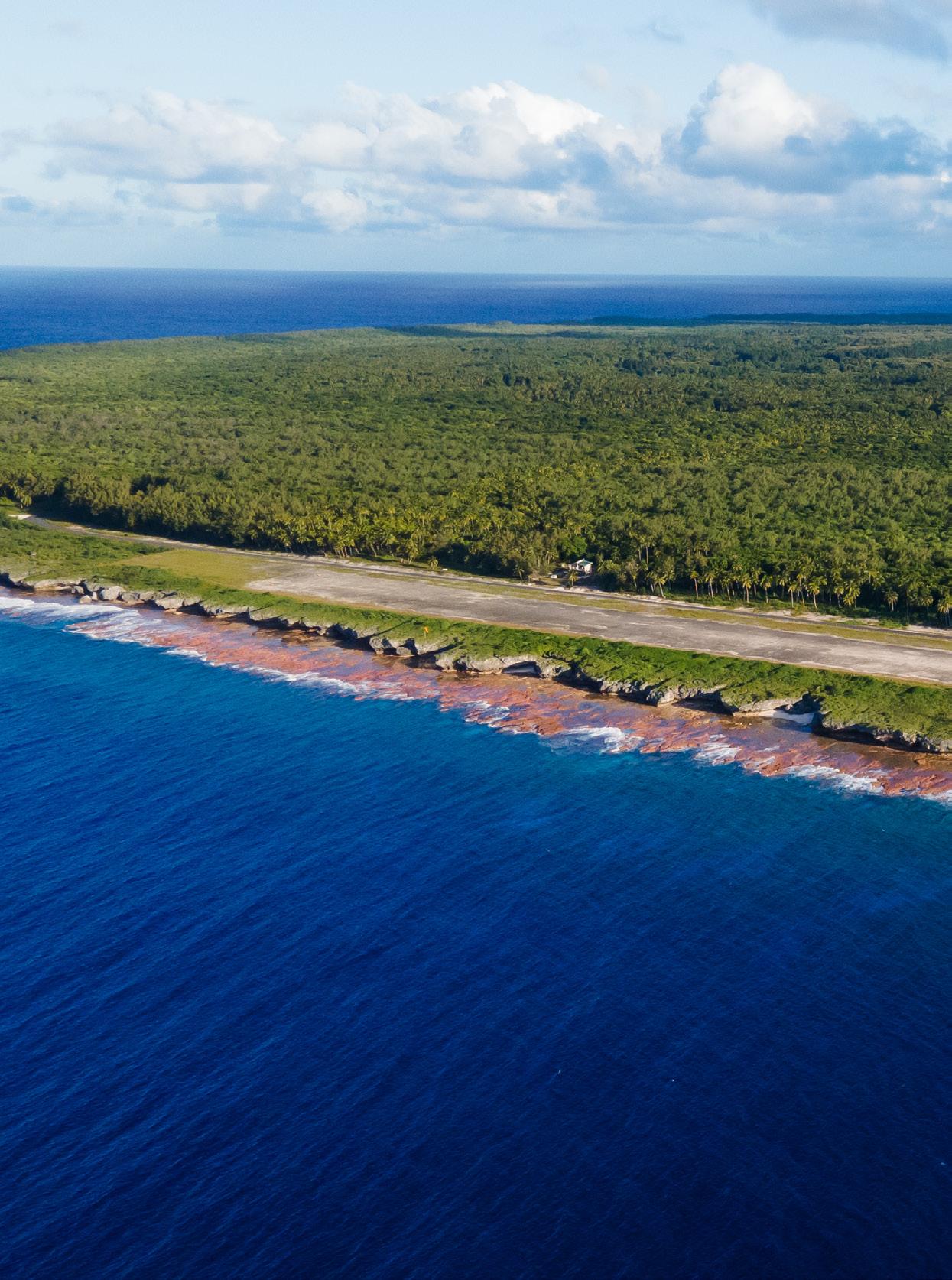 Island of Mauke photos by Tayla Jayne
Island of Mauke photos by Tayla Jayne





















 Mrs Anna Koteka Members Representative
Mrs Tatiana Burn Cook Islands Chamber of Commerce
Mr John Tini Cook Islands Workers Association Representative
Mr Heinz Matysik Non Chamber of Commerce Employer Representative
Mr Alan Taylor Board Member
Mr Garth Henderson Cook Islands Financial Secretary
Mrs Anna Koteka Members Representative
Mrs Tatiana Burn Cook Islands Chamber of Commerce
Mr John Tini Cook Islands Workers Association Representative
Mr Heinz Matysik Non Chamber of Commerce Employer Representative
Mr Alan Taylor Board Member
Mr Garth Henderson Cook Islands Financial Secretary
























 Island of Mauke photos by Tayla Jayne
Island of Mauke photos by Tayla Jayne

